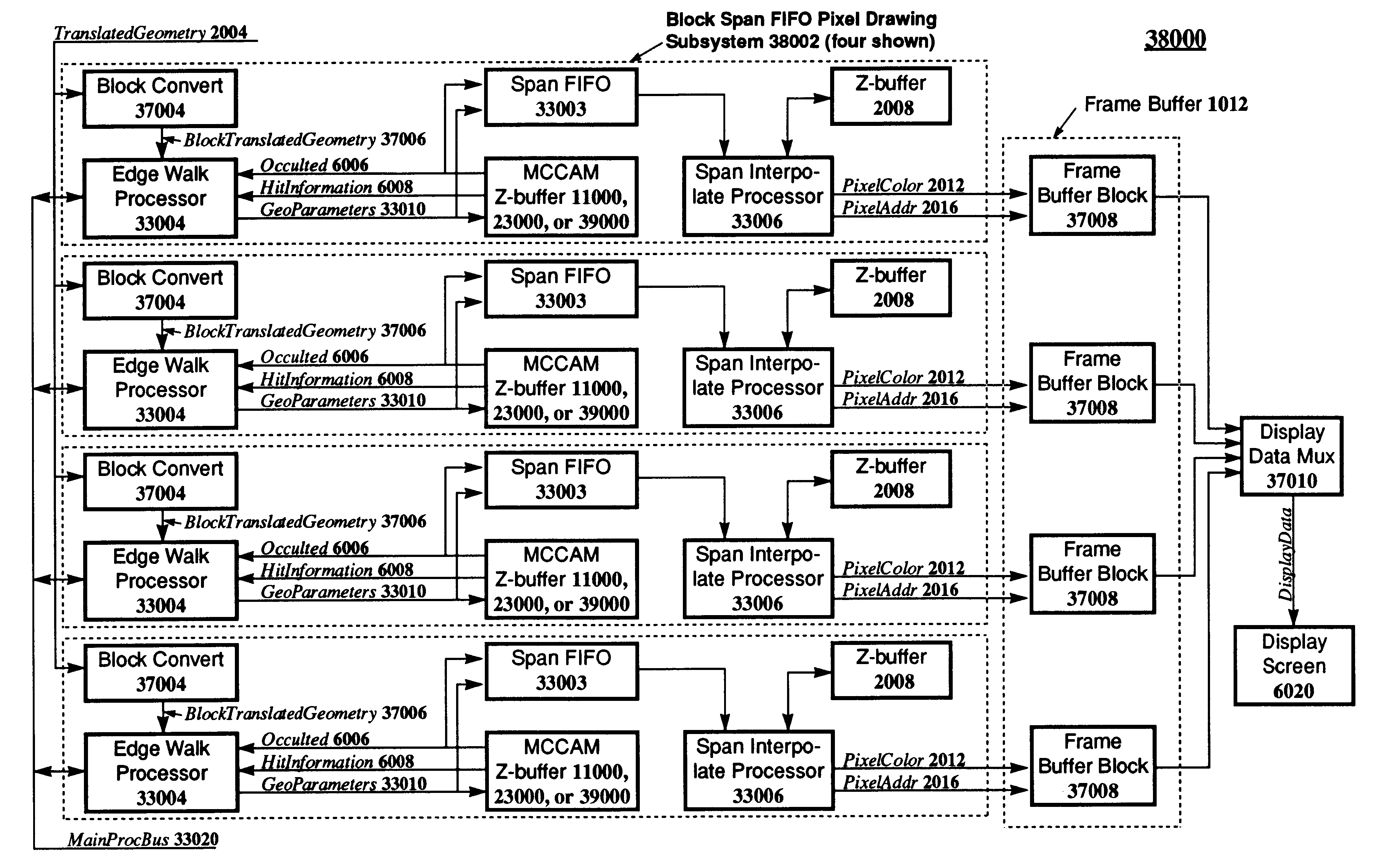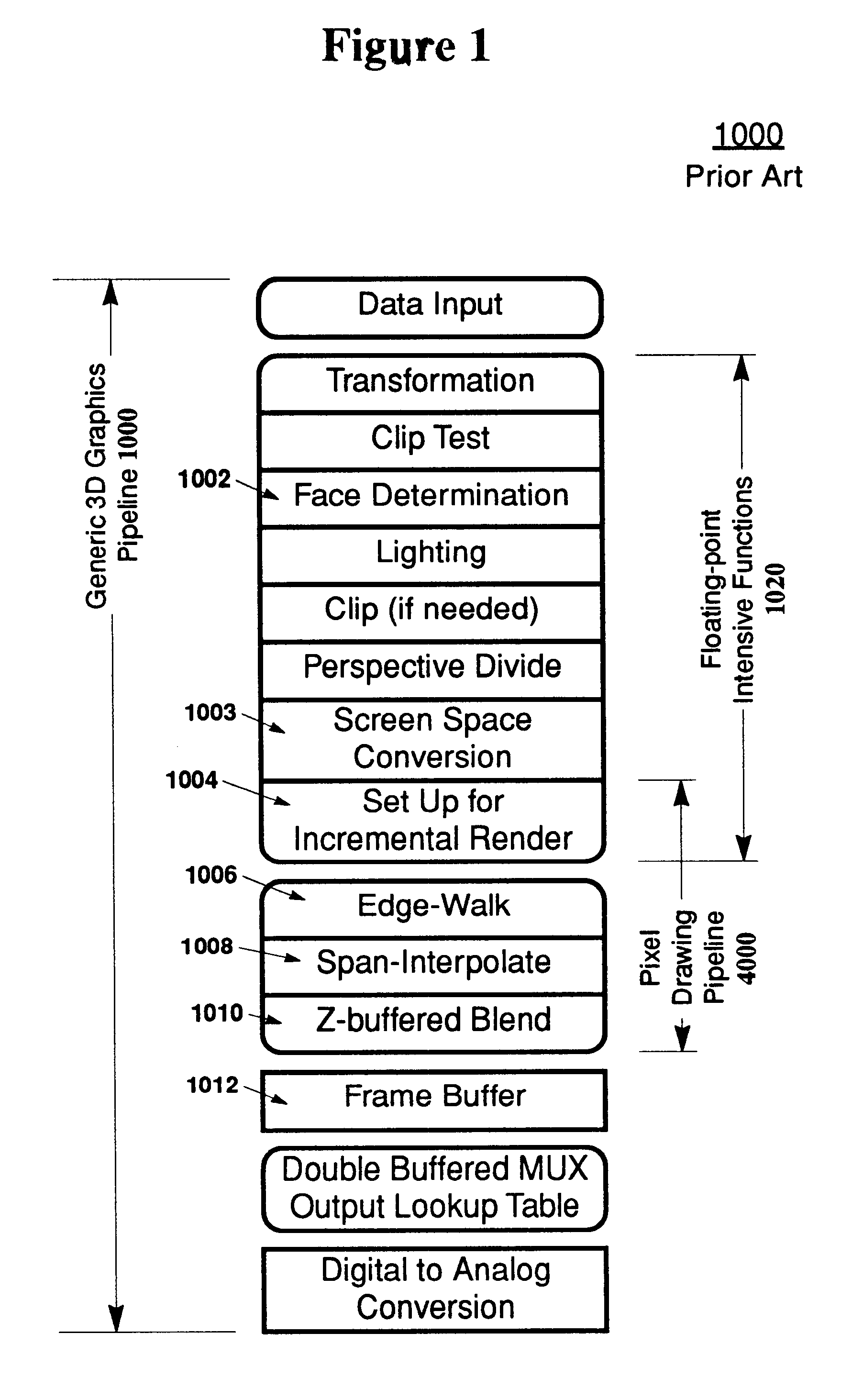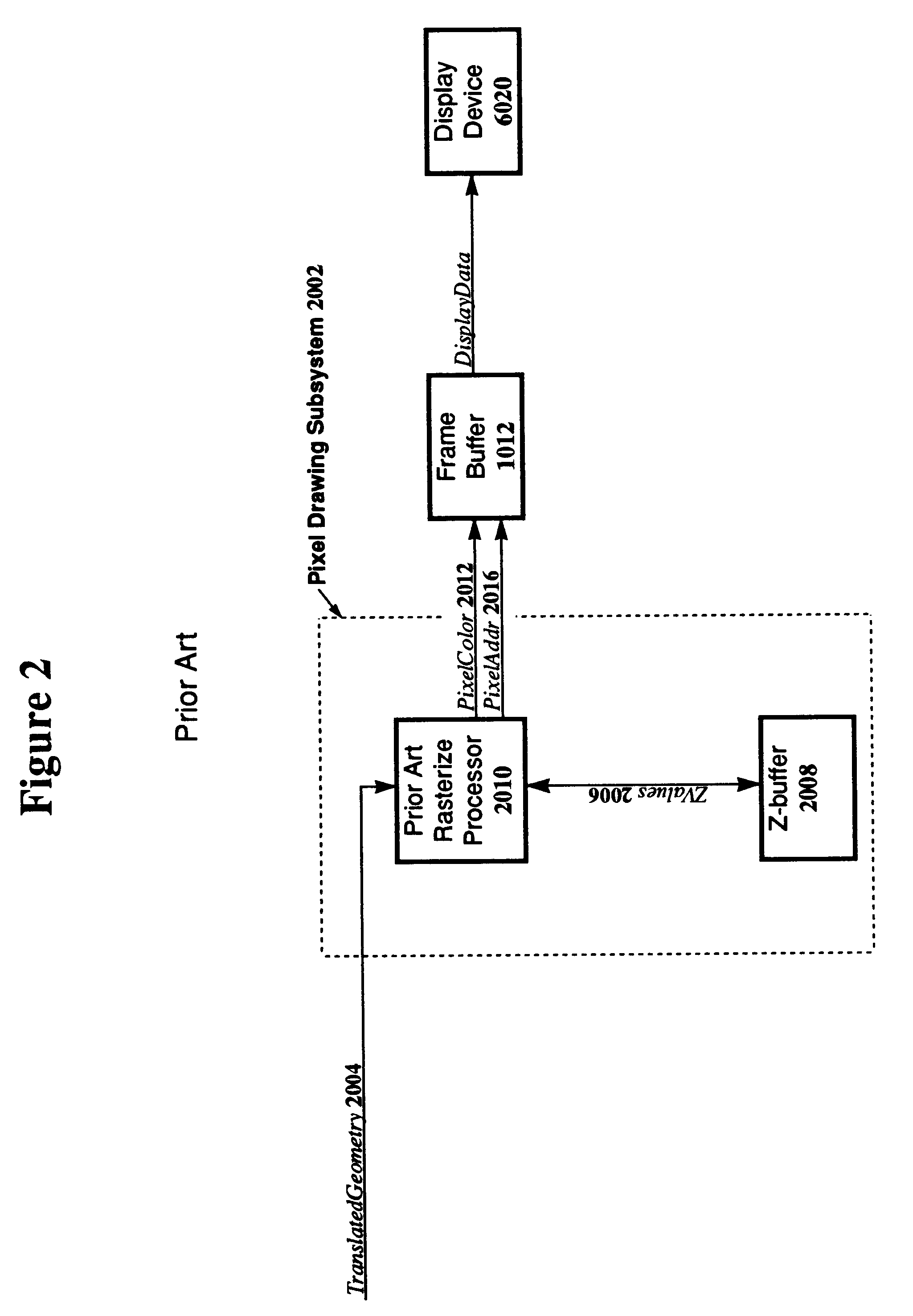Graphical rendering system using simultaneous parallel query Z-buffer and method therefor
a parallel query and graphical rendering technology, applied in the field of three-dimensional computer graphics, can solve the problems of inherently pixel-sequential nature of art z-buffer, the requirement for geometry to be converted to pixel values, and the need for rendering scenes of ever increasing depth complexity, so as to reduce the number of clock cycles
- Summary
- Abstract
- Description
- Claims
- Application Information
AI Technical Summary
Benefits of technology
Problems solved by technology
Method used
Image
Examples
Embodiment Construction
The methods presented in this document are described using both flow diagrams and pseudocode. Method flow diagrams are used for most aspects of the method, and method pseudocode is attached as a set of appendices and is used to describe the details of the method. Pseudocode is used in this document to describe a process performed by some type of apparatus, and all pseudocode contained herein is consistent in style to that of the Foley Reference. Variables and named constants are shown in italics; language reserved words (e.g. if, than, and, or, do, etc.) are shown in bold; and comments are shown in curly brackets.
Each method pseudocode in the appendices has its lines numbered, where the numbering in each appendix's first line starts with one thousand times the appendix number along with the prefix "A". The method pseudocode appendices include, for readability, vertical lines to show how both begin-end and repeat-until statements are paired together. Hierarchical method names (e.g. "...
PUM
 Login to View More
Login to View More Abstract
Description
Claims
Application Information
 Login to View More
Login to View More - R&D
- Intellectual Property
- Life Sciences
- Materials
- Tech Scout
- Unparalleled Data Quality
- Higher Quality Content
- 60% Fewer Hallucinations
Browse by: Latest US Patents, China's latest patents, Technical Efficacy Thesaurus, Application Domain, Technology Topic, Popular Technical Reports.
© 2025 PatSnap. All rights reserved.Legal|Privacy policy|Modern Slavery Act Transparency Statement|Sitemap|About US| Contact US: help@patsnap.com



